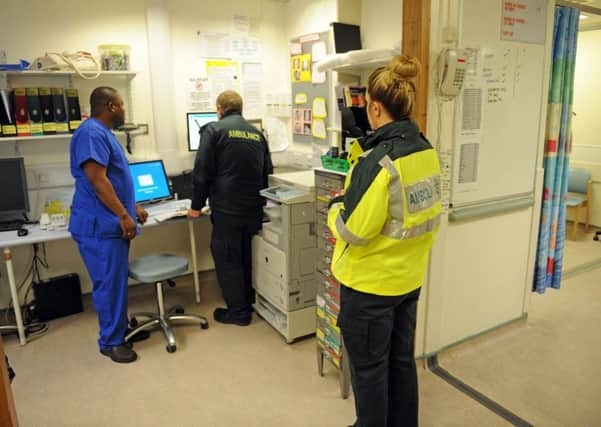QA Hospital 10th worst in country for A&E target


The latest figures released from NHS England yesterday show that in November Portsmouth Hospitals NHS Trust, which runs QA, only saw 68.7 per cent of patients within the government target.
It was the 10th worst in England.
Trusts should see, treat or discharge 95 per cent of patients within four hours of them being admitted in an emergency department.
Advertisement
Hide AdAdvertisement
Hide AdIn October, the figure was slightly better at 69.3 per cent.
November is the lowest figure since April last year when it stood at 69.1 per cent.
A spokeswoman for PHT said: ‘Like many other hospitals around the country, our emergency department has been exceptionally busy over the last three months.
‘We have treated large and increasing numbers of sick, frail and elderly patients.
Advertisement
Hide AdAdvertisement
Hide Ad‘The severity of illness requiring admission into our beds has also increased – which has placed added pressure on our services.’
As reported in The News, health secretary Jeremy Hunt said this week that Whitehall was committed to ensuring people were seen within four hours but if the target needed to be ‘protected’, it may only apply to patients who need to be seen urgently.
In response to what Mr Hunt said, Portsmouth South MP Flick Drummond said: ‘Targets still have their place and I am still very concerned about A&E at QA.’
Mrs Drummond also hopes more people who aren’t in immediate danger will stay away from A&E.
Advertisement
Hide AdAdvertisement
Hide AdShe said: ‘People need to start using the walk-in centres, rather than A&E.’
This is echoed by PHT. The spokeswoman added: ‘We would ask patients to think carefully about their urgent care needs.
‘A&E is for major emergencies such as severe chest pain, breathing difficulties, serious accidents and severe bleeding.
‘We are working hard with NHS partners to reduce the number of patients that do not need to be in an acute bed for their continuing health or social care.
‘This will enable us to safely discharge patients and ensure we have more space for our emergency admissions.’